In Apparent Contradiction, Data Shows Waukesha’s Groundwater Levels Rising, Not Falling
City’s case for diverting Great Lakes Water appears significantly weakened.
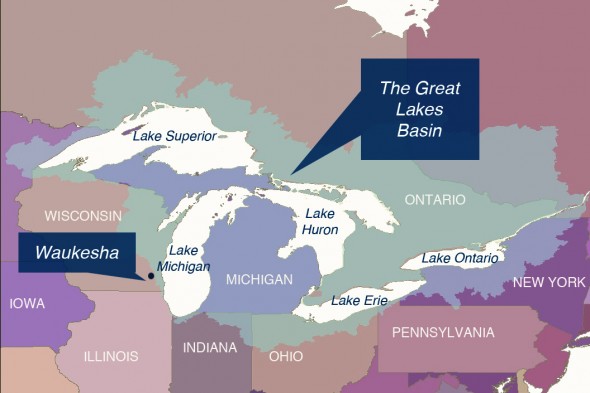
By Kaye LaFond
Circle of Blue
In what appears to be a direct contradiction to the case that Waukesha, Wisconsin is making to end its reliance on a shrinking supply of groundwater and receive millions of gallons drawn from Lake Michigan, the city’s own data shows that water levels in its main aquifer are rising, not falling. The data, never before publicized, are likely to cloud Waukesha’s proposal to divert water from the Great Lakes and test the provisions of a six-year-old international water treaty. According to Dr. Doug Cherkauer, a hydrogeologist at the University of Wisconsin-Milwaukee, the data “is clearly showing that the water levels in the deep aquifer beneath Waukesha are rising and have been for some time.”
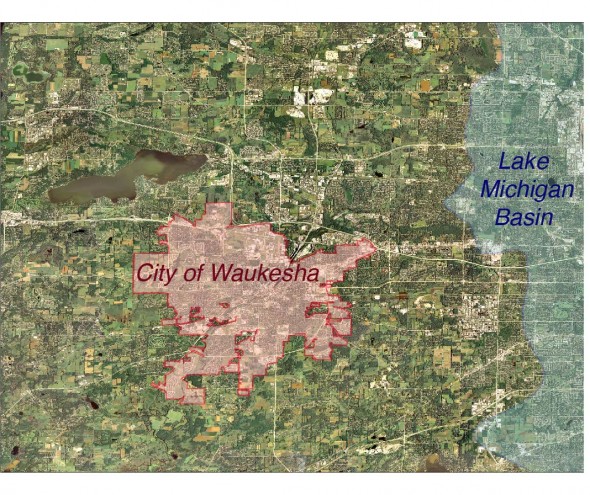
The new groundwater measurements, discovered in an open records request to the city by Steve Edlund, a Waukesha resident, and made available to Circle of Blue, apply to eight of the City of Waukesha’s freshwater wells, and one well monitored by the U.S. Geological Survey. The data show that Waukesha’s groundwater reserves are stable, and that water levels are steadily increasing. That conclusion, confirmed by experts interviewed by Circle of Blue, is at dramatic odds with the narrative Waukesha has developed to justify piping water from Lake Michigan to supply its needs, an action that if approved would set a precedent for exceptions under the 2008 Great Lakes-St. Lawrence River Basin Water Resources Compact, which bans diverting Great Lakes water except under extraordinary circumstances. Dan Duchniak, general manager of the Waukesha Water Utility, acknowledged in a statement to Circle of Blue that “there is evidence of a recent increase in groundwater levels in the city’s deep wells.” He asserted that conservation efforts, the economic downturn, and a number of wells being out of service are contributing factors. Duchniak added that the new data does not change the case Waukesha is making in its water diversion proposal, insisting that the increasing levels in the city’s aquifer “may be temporary” and that “localized conditions may not be representative of conditions across the aquifer.” He concluded that “it is not prudent to assume that water levels in the deep aquifer will become sustainable.” (see sidebar) Duchniak also noted “possibly the most relevant fact of all – that Waukesha has proposed to return at least 100 percent of the volume of water withdrawn, meaning Lake Michigan water is preserved and protected.”
The Thirsty City Really Isn’t So Thirsty
Four years ago, Waukesha first proposed to pipe over 10 million gallons of water daily from Lake Michigan. In seeking water from Lake Michigan, Waukesha’s proposal became the first formal test of the water diversion rules under the Great Lakes Compact. The agreement, negotiated by eight states, two Canadian provinces, and two federal governments, banned diversions of water outside of the Great Lakes watershed. But the compact included an exception for cities within counties that straddle the watershed boundary and prove a real need. One of those cities is Waukesha, which lies within the Mississippi River Basin; about 1.5 miles west of the Great Lakes watershed divide.

In making its case to the Wisconsin Department of Natural Resources, the Waukesha Water Utility painted a picture of a community backed into a corner of aquifer depletion and contamination, without any other option but to pipe in water from Lake Michigan. Waukesha cited what it said was a worrisome groundwater decline of five to nine feet per year on the first page of the 2010 version of its application. Those figures were removed from the 2013 version of the application. But Waukesha persisted in asserting that the water levels in the city’s aquifer are still dropping. The new application simply cites a “decrease in the rate of water level drop.” No mention of the city’s measurement data could be found in the new application. “Clearly the claim of declines of five to nine feet per year is no longer valid. Nor is the claim that the aquifer’s use isn’t sustainable, because of the rapid decline,” Cherkauer said.
Is the Groundwater on the Rebound?
The scientific accuracy of Waukesha’s initial assertions is now in question. In 2013, a report commissioned by the National Wildlife Federation and authored by Jim Nicholas, former director of the USGS Michigan Water Science Center, found weaknesses in Waukesha’s application. Among other things, the report discussed groundwater modeling and data from two USGS observation wells in nearby Kenosha and Walworth Counties that called into question the assertions of a quickly declining aquifer. The data from the eight Waukesha wells and a nearby USGS well in the same aquifer system are more confirmation of that trend. In an email statement to Circle of Blue, Shaili Pfeiffer, a natural resources staff specialist at the Wisconsin DNR, said the data had been reported to the agency. “The DNR is aware that water levels in the deep sandstone aquifer in the vicinity of the City of Waukesha appear to have stabilized and risen up to 100 feet since a low around the year 2000,” she said. “This change represents a change in DNR’s understanding of the deep sandstone aquifer conditions in SE Wisconsin since the time of Waukesha’s original application in 2010. The DNR became aware of this possibility several years ago and has investigated the issue as part the DNR Technical Review of the Waukesha diversion application.”
Some Relief For The Aquifer
It is likely, said hydrologists, that the aquifer’s recovery is due in part to reduced pressure from Waukesha and other communities. “The rise is undoubtedly due to the reduction of pumping in the deep aquifer,” said Doug Cherkauer in an email message, “resulting from some communities transferring some of their pumping to the shallow aquifer (Waukesha primarily). Others nearby have switched to a Lake Michigan supply (Menomonee Falls areas east of the subcontinental divide and New Berlin areas straddling the divide).” Waukesha also added some shallow groundwater wells into the mix in 2006, which seems to have slightly accelerated the recovery of the deep aquifer. There are a host of other considerations too, including disputed estimates on projected population and industrial growth and the presence of radium in water drawn from the city’s aquifer. “It is important to note that, even with the rise in water levels,” said Pfeiffer, “radium concentrations continue to exceed drinking water standards in some of Waukesha’s deep sandstone aquifer wells.”
The City and Circle of Blue Respond
To Circle of Blue: “Regarding your statements about the condition of the deep aquifer, we are not aware of technical studies projecting the deep aquifer is a sustainable long-term water supply for the city or recommending the deep aquifer as a source of supply to minimize environmental impacts. There is evidence of a recent increase in groundwater levels in the city’s deep wells, which we believe may be attributed to the following factors:
- Water conservation and water use efficiency have resulted in the city using less water.
- Since 2006, the city has been withdrawing as much as 20 percent of its water supply from the shallow aquifer, reducing deep aquifer withdrawal.
- Waukesha’s deep wells have recently been out of service for extended periods to accommodate major repair or maintenance activities. Static groundwater levels rise when wells are not operated.
- Several water utilities in Waukesha County abandoned deep wells or drilled new shallow aquifer wells. Going forward, however, tighter well regulations are likely to make siting of shallow wells more difficult.
In addition, the recent recession decreased water sales for most utilities, but economic recovery could reverse that. The near-term localized conditions may not be representative of conditions across the aquifer, may be temporary, and may not be sustained for the next 50 years. It is not prudent to assume that water levels in the deep aquifer will become sustainable. The near-term localized conditions do not change the long-term regional impacts of over-pumping the deep aquifer. These impacts are so severe that state legislation was put in place to better protect and conserve water resources. The Wisconsin Legislature and regional technical experts agree that 150 feet of drawdown is harmful to the environment. With deep aquifer drawdown of 400 to 600 feet, Waukesha County was classified by state legislation as one of only two Groundwater Management Areas in the state. As such, access to groundwater resources could be curtailed or prohibited in order to protect environmental resources. In addition to environmental policies set into law, our long-term water supply planning is based on consideration of long-term trends, scientific studies, and comprehensive regional planning. Our review of the best available information indicates the following:
- If less water is withdrawn from the deep aquifer and more from the shallow aquifer, then deep groundwater levels increase. However, reducing deep aquifer pumping and increasing shallow aquifer pumping produces adverse environmental impacts on wetlands and reduces baseflow to lakes and streams (See Volume 5 of the Application, Environmental Report).
- If less water is withdrawn from the deep aquifer when groundwater systems convert to a Lake Michigan supply, deep aquifer groundwater levels increase. This happened near Milwaukee, Brown County, WI, and Northeastern Illinois. However, the rebound of the aquifer was temporary as, over time, development drove more groundwater use and the deep aquifer declined again. The deep confined aquifer is not sustainable and it is not prudent to base long-term water supply planning on it.
- If Waukesha continues with groundwater supplies, it contributes to adverse environmental impact on shallow and deep aquifers. Because of the resultant environmental impacts, the groundwater supply alternatives are not sustainable for the long-term. In support of your review of Waukesha’s Application, I have tried to cooperate and provide you with requested information in a timely way. Despite the shared information, your recent article gave an unbalanced overview of our proposal. A few examples include:
- No mention was made of possibly the most relevant fact of all – that Waukesha has proposed to return at least 100% of the volume of water withdrawn, meaning Lake Michigan water is preserved and protected.
- No mention was made of the shale layer that restricts the recharge of our current primary water source.
- The 2050 population projection is incorrectly cited, creating a false impression of aggressive growth. The article cites the City’s current population of about 71,000, but later incorrectly says the City’s population will grow to 97,400 at buildout in 2050. The actual population projections at buildout are 76,300 for the City and 97,400 for the service area. While the population served increases by about 26,000, about 10,000 of this service population resides in the area today and is served by private wells (See Volume 2 of the Application, Water Supply Service Area Plan). The claim that the City is seeking water to allow sprawling growth is not supported by state and regional population projections. It is not supported by approved land use plans through 2035. With an actual projected population growth rate of 0.5% per year, statements like “The amount of water Waukesha seeks . . . is designed to allow the city’s sprawling growth pattern to expand” are not true. If you had asked about this issue, I could have provided you with the facts.
In addition, no mention of other relevant information about growth in our FAQs was provided in your article, including the fact that only 15% of the land in the service area is available for development. Your website says, “Circle of Blue generates the fresh, objective reportage . . . while avoiding the ’advocacy’ label.” I hope that any further articles will, in fact, be more objective.” Daniel S. Duchniak, P.E.
General Manager Waukesha Water Utility
Kaye LaFond responds: In terms of a “temporary” and “localized” increase, it is worth noting that the aquifer has now been slowly recovering for 14 years, and that data presented in the 2013 NWF report shows similar increases in other counties – we have to wonder how Duchniak is defining “localized”. What’s more, while the statement reminds us that an increase in shallow groundwater pumping could harm local wetlands, it does not acknowledge the possibility of simply continuing to pump groundwater (deep and shallow) at the current pace, and monitoring the response of the deep aquifer. With Great Lakes water at stake, surely this is an option worth exploring. The city argues that continuing to pump water at the current pace does not allow for projected growth in population or consumption. However, those numbers have been questioned not only by a host of environmental groups, but also by the Wisconsin DNR. In response to the DNR’s request for more justification of the demand projections, a technical memorandum was provided by the city, which cites the desire of current industrial customers to increase pumping rates, as well as potential development of new industries. Understanding that the Great Lakes Compact does not seek to provide out-of-basin diversions to support industrial water use, it remains unclear as to whether Waukesha’s diversion falls even remotely under the requirements of the Compact.
is both a scientist and a journalist, she holds an MS in Environmental Engineering from Michigan Technological University, and she brings proficiency in ESRI’s ArcGIS mapping software.

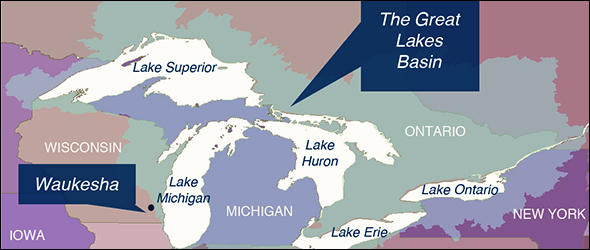
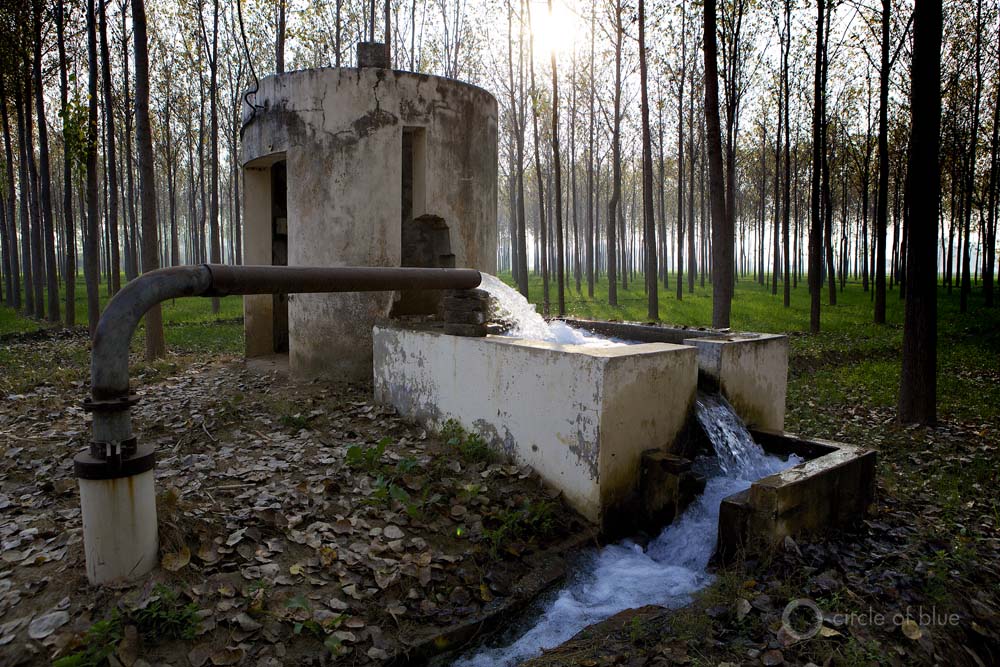

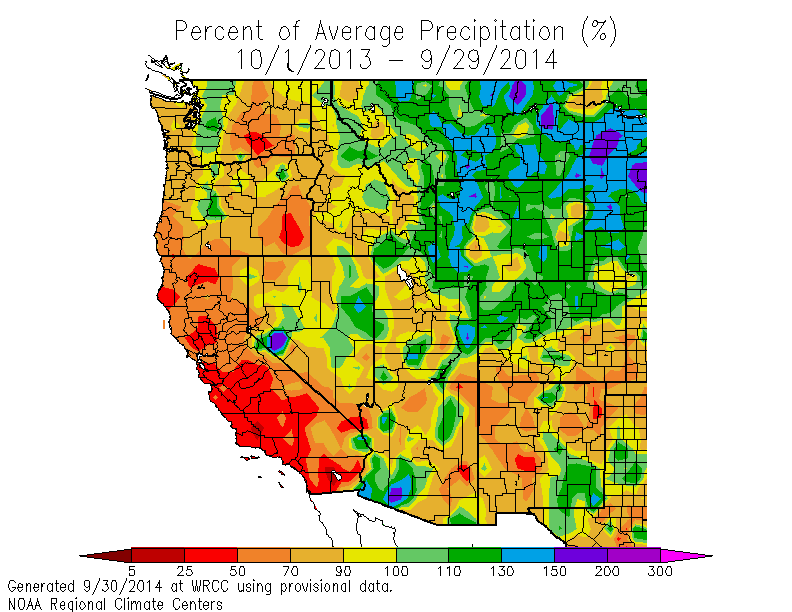
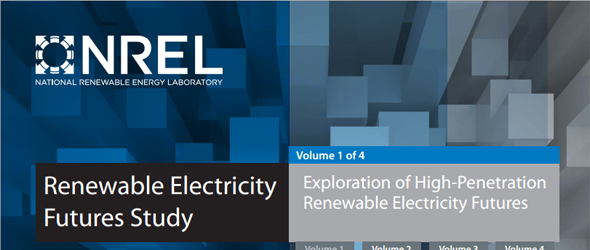
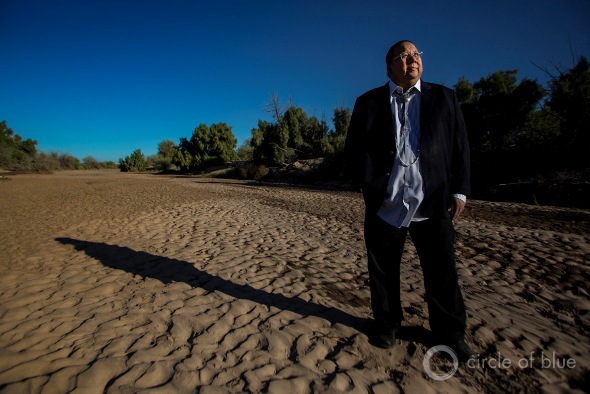


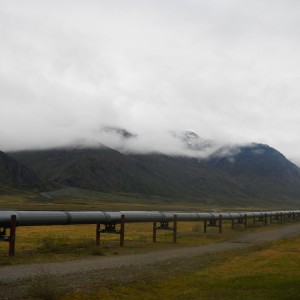

Lake Powell is filling up now. On the rise, but the Bureau of Reclamation does not want to spill the beans yet.
The state of Michigan has been diverting the Great Lakes water for several years as the deal former Michigan governor John Engler set up for Nestle’ Ice Mountain water bottles. To add insult the Michigan Republicans refuse to allow any plastic container deposits on the water leaving the Great Lakes or in Michigan, thus adding to the pollution of land and waters. The no plastic deposits has cost the residents of Michigan tens of millions of dollars.
Mr. Duchniak does a great job of explaining some basic facts about the deep aquifer withdrawals in the area. The use of this systems is not sustainable at current rates – regionally or locally. The city has done what it can to move towards other sources that are less fossil water and more runoff. The shift to other supplies is understandable given the various arrangements made in the Compact to only use the Lake if there is a strong argument. Long-term, the city is on the right side of this discussion.
– Jack Wittman, Ph.D.
INTERA
Principal Geoscientist
Dr.Wittman,
Are you aware of a scientific study that shows the deep aquifer to be unsustainable for the next 50 years, even with reduced dependence by the potential for induced aquifer recharge or river bank inducement? Or, a study that shows Waukesha must begin construction for a Lake Michigan Diversion immediately due to a pending dire need?
Do you believe that the City of Waukesha needs Lake Michigan water even though the city population is expected to grow by 4500 people through 2050 and the deep aquifer static water level from the surface hasn’t dropped since the 1990’s?
In fairness, background on the utility service area would be appropriate as the most concerning point of the application for the need (vs. want) of a Lake Michigan Diversion Exception. The service area was expanded prior to the application to include 4 other communities previously not on the deep aquifer system, most are shallow water private wells. With a Lake Michigan source, those communities would receive water from the city at the retail level from Waukesha as the wholesaler. The statistics cited by Mr. Duchniak are absent of industrial and commercial development. The criteria for a diversion exception does not include providing water to one community and redistributing it other communities that fail to plan within their own resources. That would be like piping water Lake Michigan water to Las Vegas.
It’s easy for those who don’t live in Waukesha to say the city doesn’t need Lake Michigan water, citing the aquifer data. I’ve heard both sides of the argument, and I’m still unclear of the situation of rising and falling aquifer levels. However, as a resident, I’m concerned about the radium levels in the water. That is the bottom line here.
Hi Jason – I do acknowledge in the article that radium is an issue in terms of Waukesha’s water supply. My bottom line, however, is that the City misrepresented the state of the aquifer in a very important and precedent-setting bid for Lake Michigan water. I am wise to the fact that somewhere down the line, a straddling community will need water from the Great Lakes – so be it. However, these exceptions requested under the Great Lakes Compact should be held to the HIGHEST standards of transparency and scientific integrity.
Follow the money, I agree with Kaye, something about this stinks. Either this is a test to see how easy/difficult it will be break the compact for future CORPORATE GREED or an over reactive community. I’m leaning towards the CG.
Jason, Kaye,
A November 2014 confidential memo from the former Waukesha City Administrator and Mr. Duchniak updated the Waukesha Common Council on the status of the Diversion Exception application with the review by our DNR.
The memo concludes that if the DNR concludes that the application is approveable and Waukesha receives approval from the other 7 Great Lakes states, that construction will not be complete until 2020. Waukesha is under a stipulated court order to be radium compliant by June 2018. They state in their memo that if they receive the approval they will seek an extension for the 2018 deadline. That is very very unlikely given that Waukesha can install radium filters on it’s remaining deep aquifer wells for a fraction of Lake Michigan water.
Bottom line is that Waukesha does not have a radium problem and as Kaye pointed out, Waukesha’s water supply is a matter of community development within the means of your available water supply i.e., California.
Here’s a link to the radium court order story,
http://takinittothestreets.us/sha/viewtopic.php?f=4&t=69&start=105#p5217